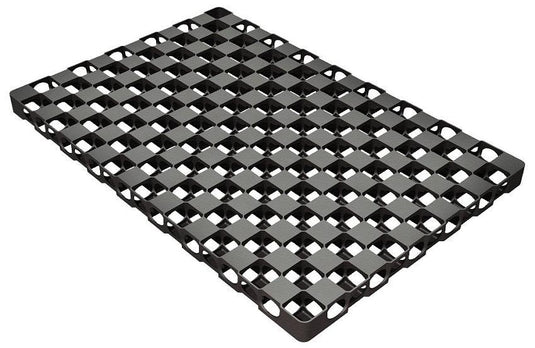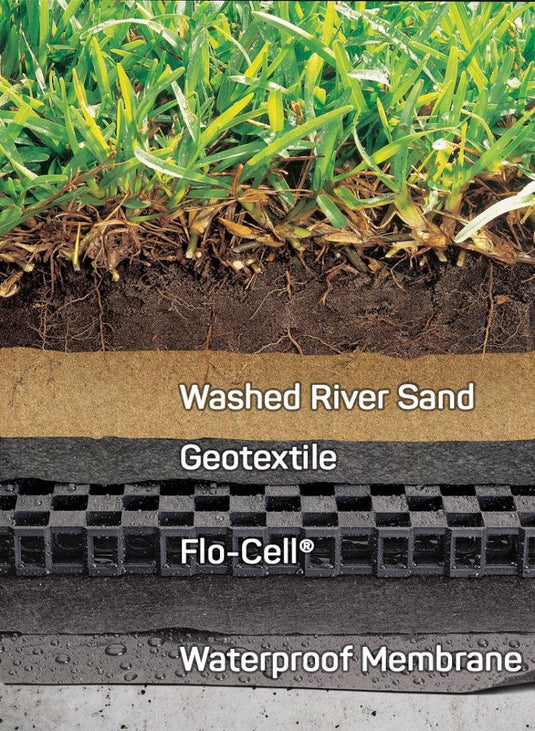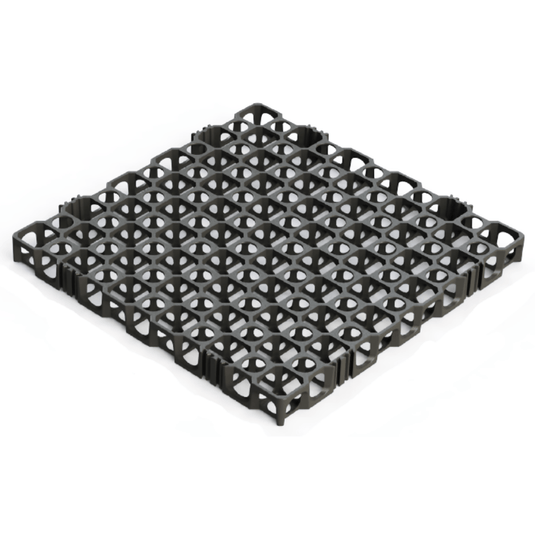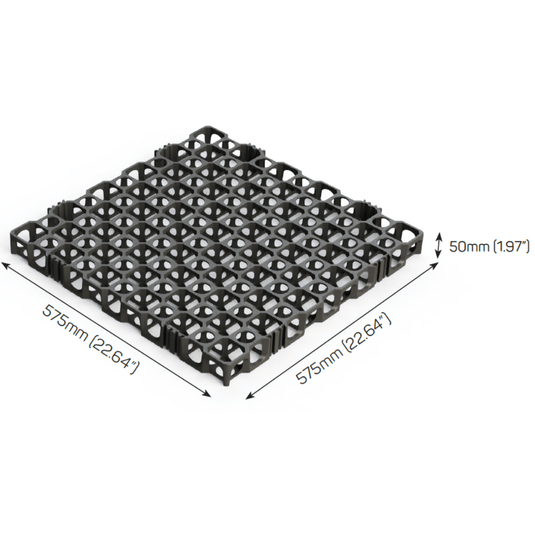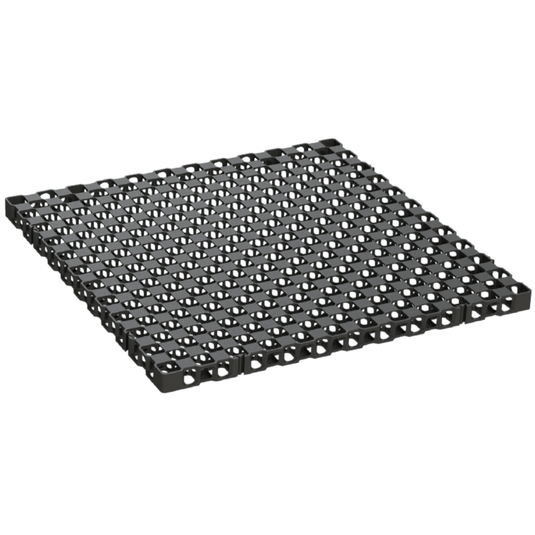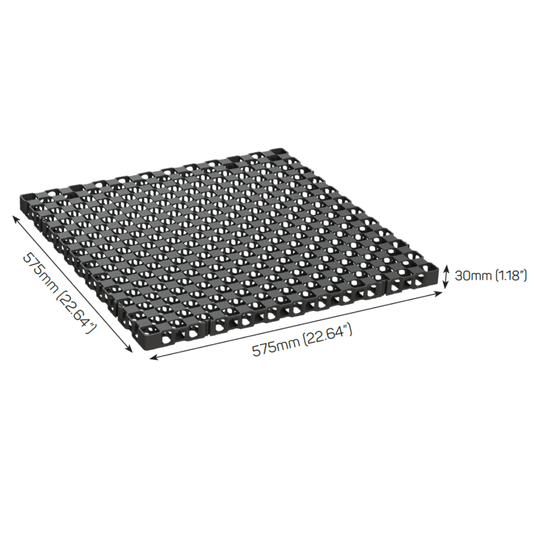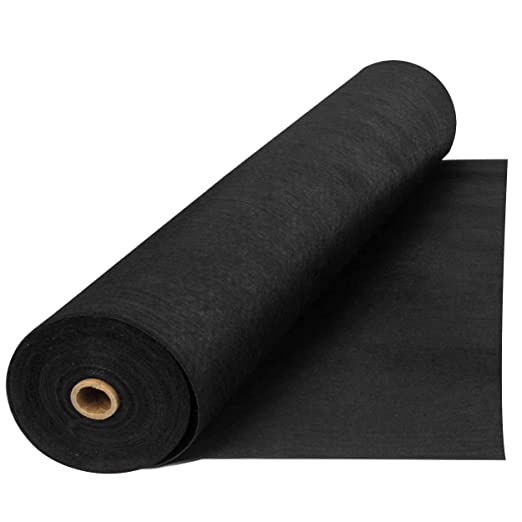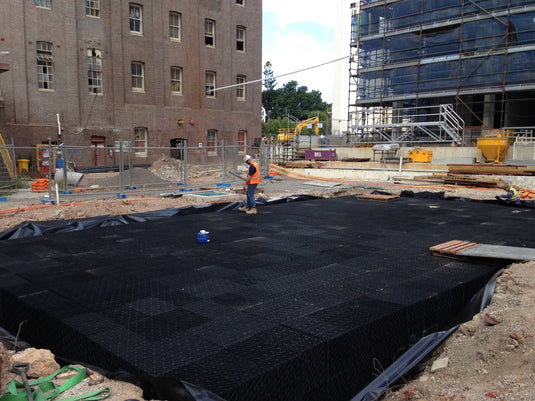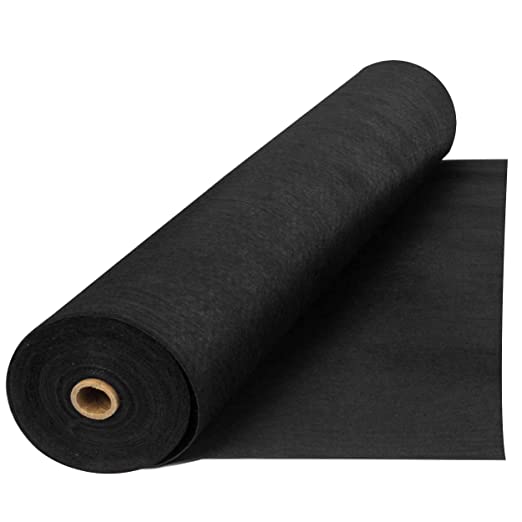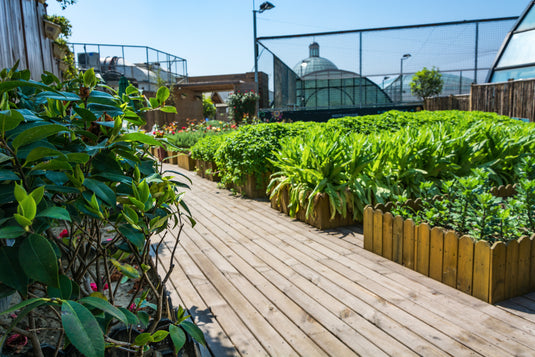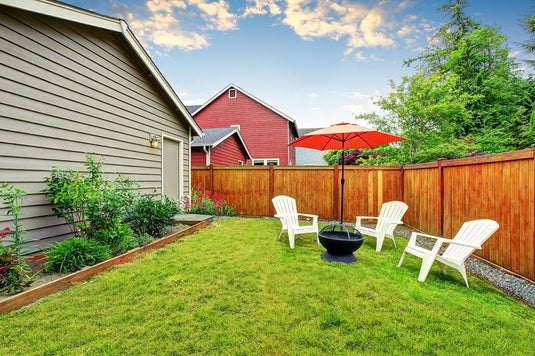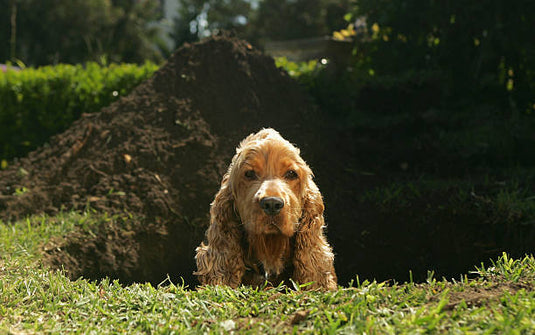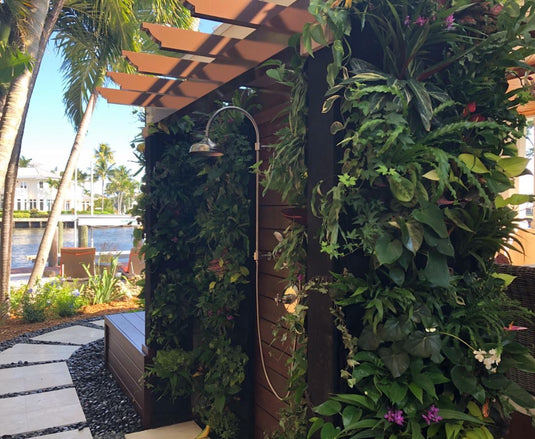
Drainage Cell by Atlantis
What is a drainage cell?
A drainage cell is a versatile geosynthetic product typically manufactured from recycled plastics like polypropylene, making it strong and lightweight.
Drainage cells, when linked together, form a uniform surface which create evenly distributed perforations void areas that help with water drainage. They have permeable matting, which provides the needed space for water to be absorbed or to be drained away.
Their structure, shape, and size vary depending on use, but some of the usual grid patterns resemble that of a honeycomb or a chessboard.
How do drainage cells work?
Drainage cells are used in subsurface drainage systems. It works like a permanent, structural, and non-clogging void between the soil and the surface, such as a concrete slab, that allows for excess water to pass through while keeping enough moisture. The structure of drainage cells allows them to efficiently drain water, which is beneficial in many applications.
In a nutshell, it provides a layer of air between two surfaces, preventing water from getting trapped and causing damage.
What are the benefits of using drainage cells?
Using drainage cells has different advantages for a wide range of applications, such as the following:
Quick-to-install - No heavy equipment is needed to install drain cells, making the installation process faster than aggregate drainage systems
Environment-friendly - Drainage cells are made out of recycled plastics, making it resistant to chemicals and bacteria found in the soil
Lightweight and strong - Despite being easy to handle, a drainage cell mat is very strong — it has a high carrying capacity and can withstand intense compressive load
Flexible - Drainage cells are structurally designed to be installed either horizontally or vertically. They can also be configured to meet any specifications needed for the project
Efficient - Drainage cells effectively drain excess water while maintaining an ideal moisture level.
What are some of the most efficient usage and application of drainage cells?
Given its versatility, drainage cells can be used for a variety of projects. Here are some:
Green roofs
Drainage cells provide the much-needed garden drainage for planter boxes and roof gardens. Not only will they be able to improve water drainage, drain cells can also provide better air circulation and prevent root rot. They can also be used to create vertical gardens, which can cover the upper facade of buildings or establishments.
Having rooftop gardens and planter boxes in buildings, particularly in urban areas, help the environment by reducing carbon emissions, improving air quality, and creating a habitat for wildlife in the concrete jungle.
Sport fields
Another excellent use of drainage cells is in sports — for most open sports fields like golf courses, a million liters of fresh water every year are consumed. Drainage cells have two applications in the sports field space, as they can be used to provide subsoil drainage or in an underground water collection and recirculation system. All these reduce the need to import fresh water for irrigation, therefore saving water consumption throughout the year in all weather conditions.
Road drainage
The use of drainage cells in road drainage is focused on reducing the impacts of road runoff on aquatic and terrestrial ecosystems. With drainage cells, water quality from roads is improved.
Underground tanks
Drainage cells are also used in underground infiltration tanks and rainwater harvesting in both commercial and residential projects. In both projects, drainage cells are often used to drain stormwater runoff or water coming from the plant boxes in the roof area.
Landscape drainage
The strong material of drainage cells make them a good reinforcement for housing grass in trafficable areas. They can also help in passive irrigation and efficient water management on landscapes.
Drainage Cell by Atlantis (Atlantis Flo-Cell)

Whether you're building a retaining wall, a rooftop garden or just protecting your lawn from being flooded, the Atlantis Drainage Cell (Flo-Cell) product range is the answer!
Originally designed in 1986 by landscape Architect Humberto Urriola, this unique product uses an offset chessboard pattern to maximise structural strength and void percentage.
Below we have some more specific use cases, including diagrams of the drainage cell product. The most common use though, is for planter boxes. These have become very popular in new developments.
Atlantis Drainage Cells

All Atlantis Cells are made from recycled polypropylene, so they are one of the most sustainable choices for rain water management, void fill, turf reinforcement and much more. They have an incredible lifespan and require little-to-no maintenance.
As the most advanced underground geo-composite on the market today, Atlantis drainage cell offers a number of advantages over traditional materials.
The installation usually includes drainage cell with geotextile material. This helps avoid the drainage cell filling up with soil.
Drainage Cell Suppliers
Eco Sustainable House is Atlantis' only Queensland distributor and we ship Australia wide, so we are your best choice for any quantity or size of drainage cell. You can purchase 20mm, 30mm or 50mm cell through our online store or phone us to receive a free custom quote for your project.
Drain Cell Options
As mentioned above, the Atlantis Drainage Cell, or "Flo-Cell" comes in 20mm drainage cell, 30mm and 50mm for different applications. The product is most commonly used as a sub surface drainage void. The list of use cases include:
* Planter box drainage void
* Grass field sub surface drainage (Sporting grounds, Parks, Golf Courses)
*Other purposes Eco Sustainable House have found include fence extensions, outdoor privacy screens and vertical garden/creeper plant walls.
Frequently Asked Questions
-
What is a drainage cell?
A drainage cell is a type of modular tray made of plastic or other materials that is used in planter boxes to promote proper drainage and to prevent over-watering. -
How does a drainage cell work?
A drainage cell works by elevating the planter box off the ground and providing a layer of air between the soil and the bottom of the planter box. This air layer helps to prevent water from getting trapped in the soil and allows excess water to drain away from the roots. -
What are the benefits of using a drainage cell in a planter box?
The benefits of using a drainage cell in a planter box include improved water drainage, reduced risk of root rot, better air circulation, and longer-lasting planter boxes. -
Can drainage cells be used with any type of soil or plants?
Yes, drainage cells can be used with a variety of soil types and plants. However, it is important to choose the right type of soil and plants that are suitable for the specific conditions of your planter box. -
How do you install a drainage cell in a planter box?
To install a drainage cell in a planter box, first make sure the planter box has a drainage outlet at the lowest point and has been waterproofed if needed. Then lay the drainage cell on a level surface, then install some geofabric material and finally fill the planter box with soil and plants. It is important to use a high-quality soil mix that promotes good drainage, and to water the plants regularly but not excessively. -
Do you need drainage for planter box?
Yes, proper drainage is important for planter boxes to prevent over-watering and ensure the health of the plants. Excess water in the soil can cause root rot, which can harm or kill the plants. By providing adequate drainage, you can avoid water-logged soil, maintain air circulation, and promote healthy root growth. -
How many types of drainage are there?
There are two main types of drainage: surface drainage and sub-surface drainage. Surface drainage is any system that moves water away from a structure or property by means of an open channel or pipe. This can include gutters, downspouts, and catch basins. Sub-surface drainage is any system that moves water away from a structure or property by means of a closed pipe or channel. This can include French drains, septic systems, and sump pumps.
Customer Reviews
Recent Posts
Subscribe to our newsletter
Be the first to know about exclusive in-store perks and once-in-a-lifetime deals. Don't get to miss them!

